How can we represent collective phenomena? Whether systems biology or open-world comprehension, such complexity is difficult to monitor or even envisage. Most formal approaches are supported by reductionist analytical models, which struggle to capture collective properties such as situated interactions or collaborative influence (Devlin, 2009). This project uses a narrative-based model of higher-level emergence to extend current approaches to modeling the interaction between neurological and biological processes.
One example is post-traumatic stress disorder (PTSD). Here, cognitive and biophysical systems interact to produce the symptoms of stress and sleep loss. Resolving these symptoms requires an understanding of how cognitive and biophysical systems interact. However, memory has very different qualities and ontological scope from the biological processes of stress, which makes modeling their interaction a challenge. In addition, a key feature of this interaction is ‘governance’, in which one system’s processes can temporarily determine how another system’s processes unfold. An example is the way therapy of PTSD’s stress response requires treatment of the memory of the event – eg. the traumatic lack of control.
We have been working on a method to visualize these shifts as streams of information which interact and flow. We start with my narrative-based modeling method (snapshot below, full animated models here), which notates the transfer of information between contexts and demonstrates the transitions needed to bridge them.
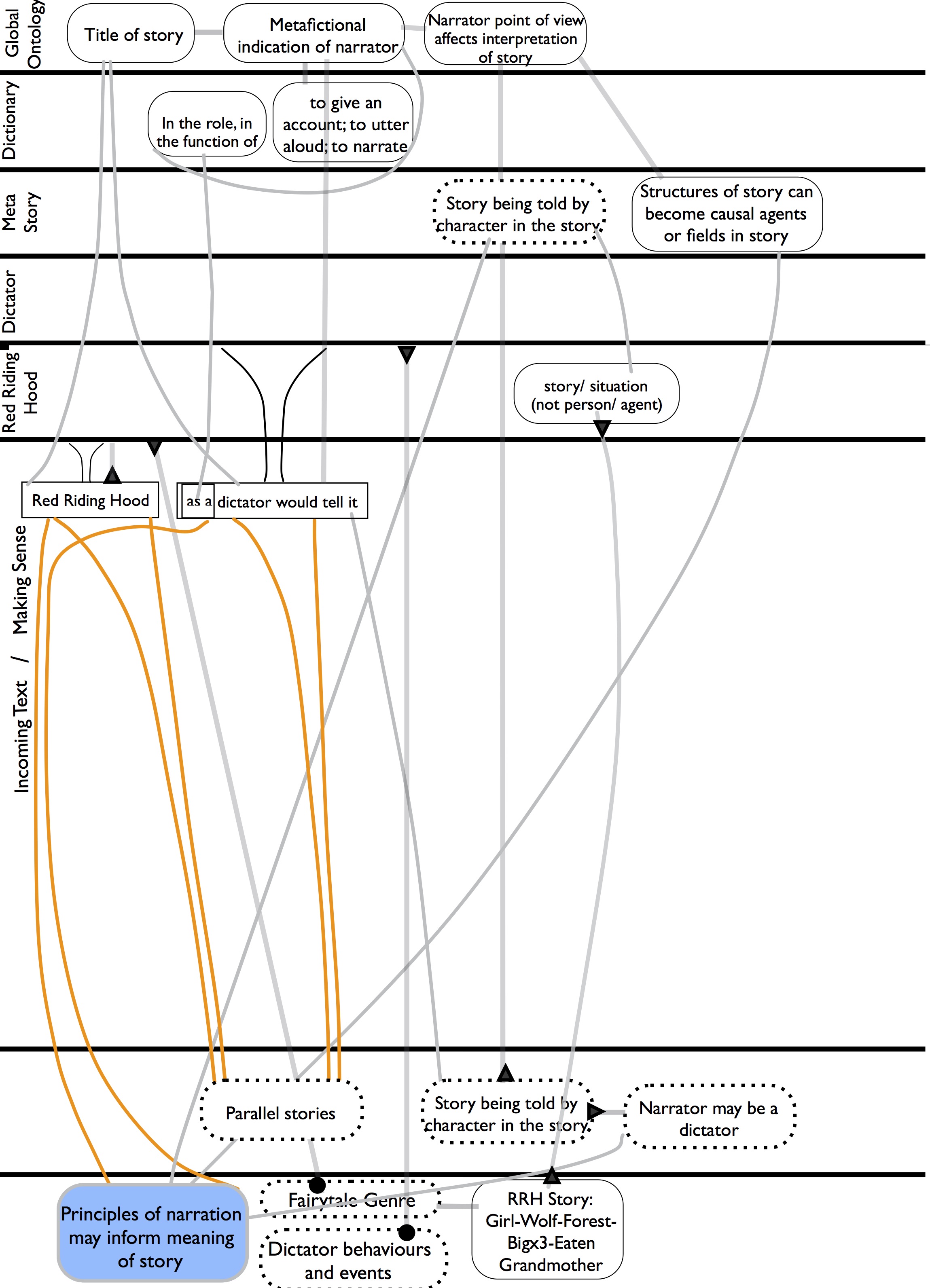
This work originally addressed the problem of ontological interoperability. In current knowledge systems, differences among ontologies represents a barrier to reasoning (and general functionality). This problem is usually addressed by standardizing away differences of lexicon or information structure. By contrast, narrative leverages such differences with a collection of higher-level operators. These designate ontological boundaries, the transgression of these boundaries, and enable the production of new concepts, using devices such as analogy and causal transformation. They also build new cohering structure across the whole narrative system. The difference between ontological frameworks is therefore important, and is a key feature of the model.
Narrative demonstrates how bridges between different ontological states can be built, stepwise. In fact, storytelling is a semantic machine that enables a reader to comprehend the process of integrating pieces of information that are not usually linked. Its goal is to describe exceptions to routines in a manner that is comprehensible. One feature is that its notion of context is thus more flexible. In the rewrite of the well-known fairytale, Red Riding Hood as a Dictator Would Tell It the phrase “Once upon a time there was a poor, weak, wolf” quickly runs through a series of inferential operations that turn a general definition of ‘wolf’ and ‘dictator’ into a new, small local inference – one in which the wolf is cunning in the manner of a dictator, who is telling lies about himself. Newly formed, nuanced meaning is also possible at a larger scale – for example, at the end of the tale, when the reader understands the overall point or theme of the story.
My narrative method shows how those structures are built. As fundamental units, we use infons from situation theory. An infon is the minimum unit of meaning, which we express as triples. We represent these units in the following way.
A high level causal lattice view is:

An exploded lattice can be quite complex. The primary path is imaged above:

It’ll be possible to zoom between levels:
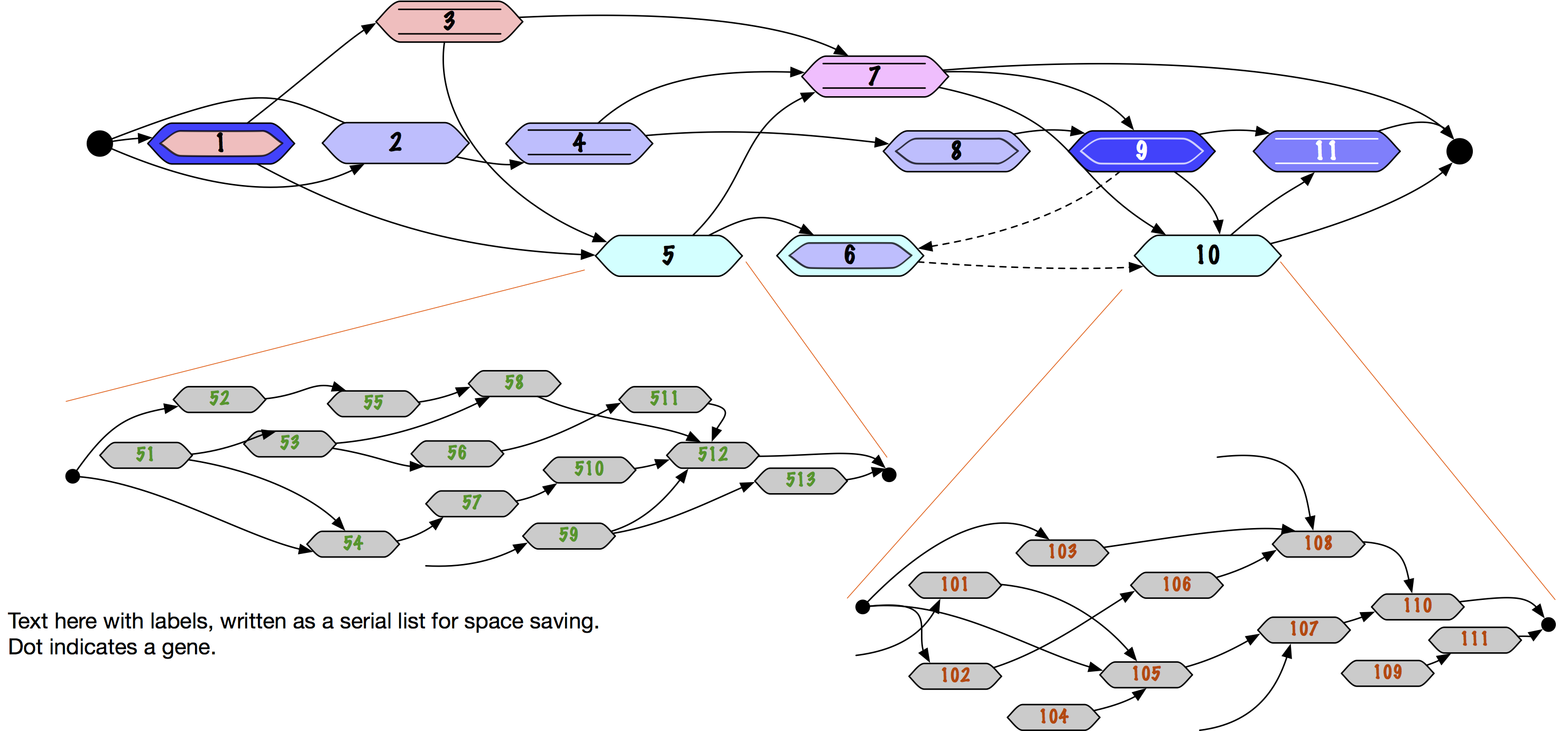
Some novelties here are that nodes can be nested/exploded for examination; nodes can contain unknowns or partial knowns; any element’s formal definitions can be examined and edited. When doing so, causal relationships may change. ‘Pulling’ by the user can explore and change internal tensions. An example of the user ‘pulling’ in this way is imagined below:
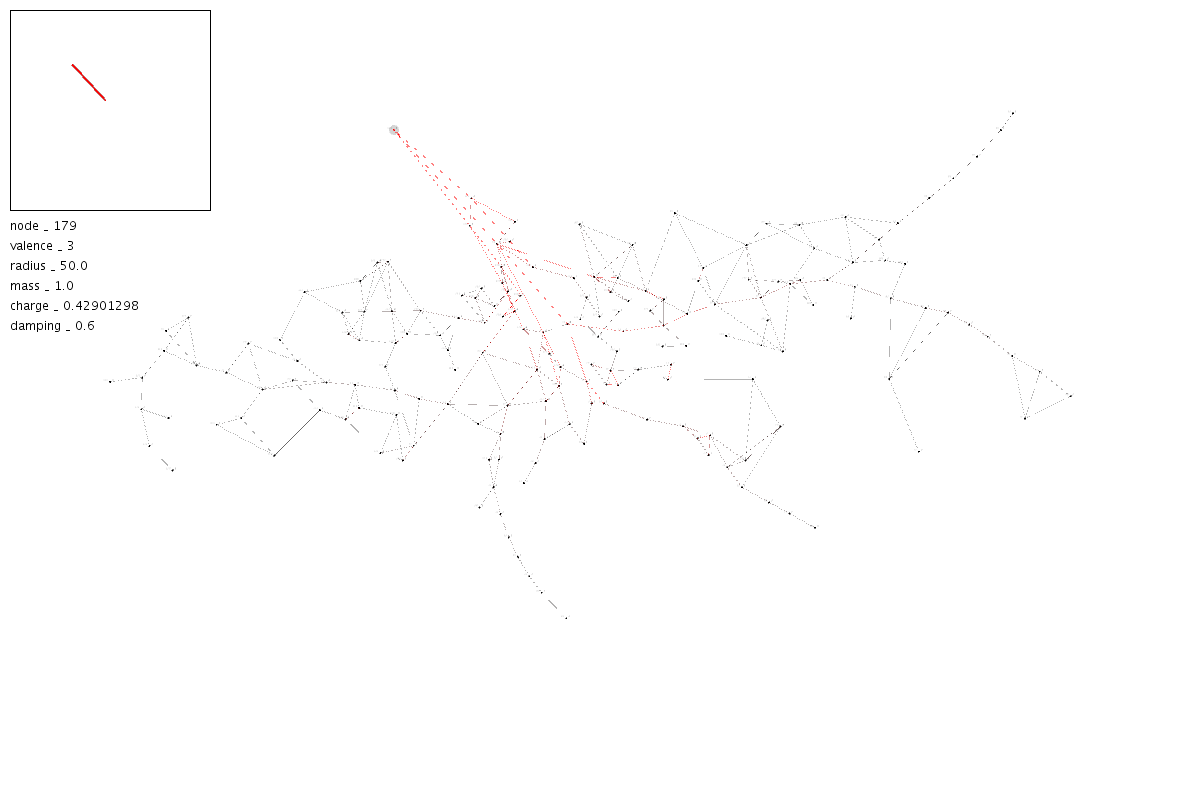
This and the below views have been produced by the NAKFI work so far. We want to display how the ‘clouds’ of situations themselves interact, and their influence on the lattice. The primary focus for the final product will be the higher-level operators which are drawn from the narrative method. These will operate on the above lattice structures, which will sit in a space much like the below, currently being designed by Niccolo Casas.

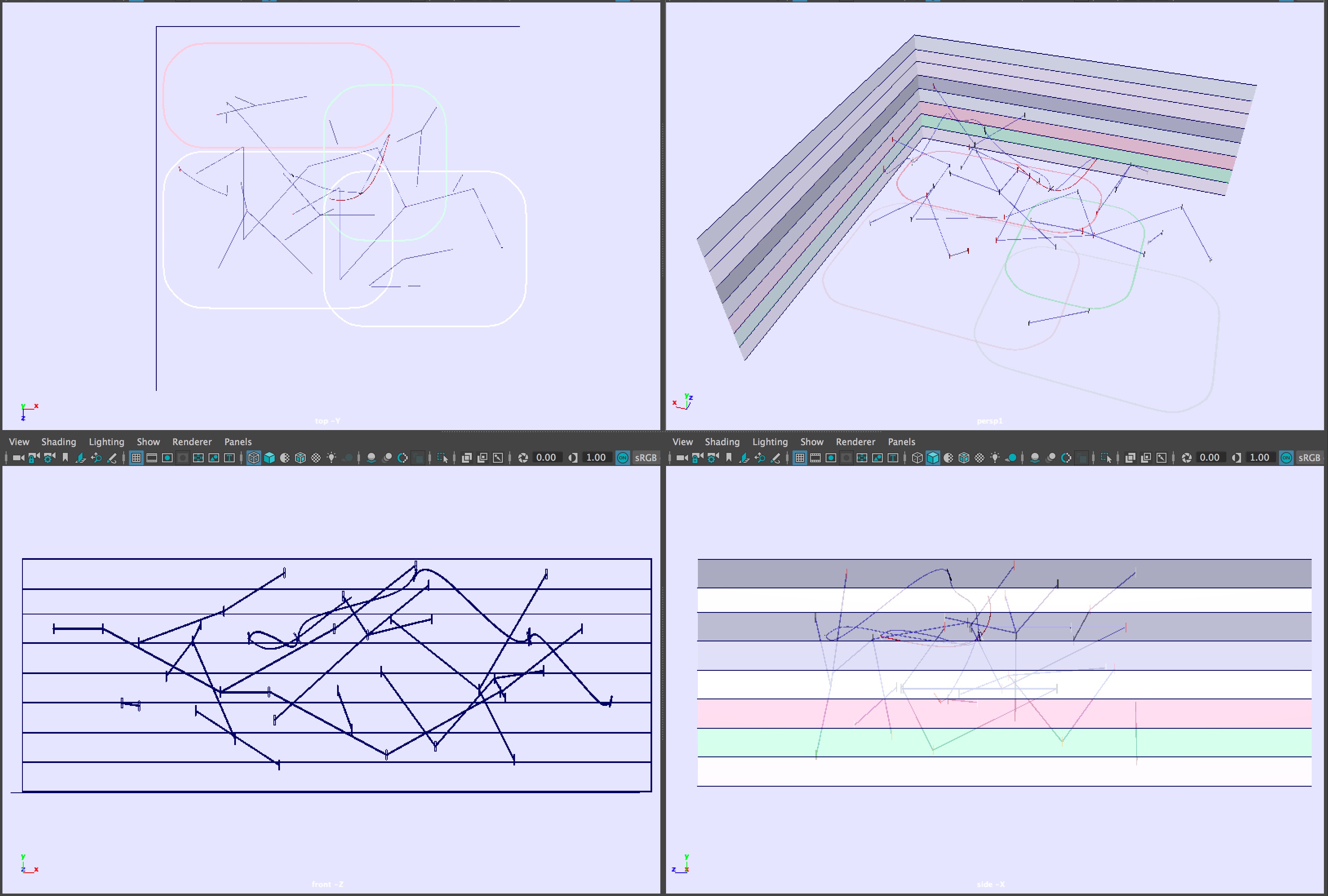
A final, key aspect is that the forms must eventually have lyrical, stylized lines. Some of this structure is being provided by Niccolo Casas as design choices which are currently being made. Niccolo’s PhD examines the relationship between flow, entropy and aesthetics.
_____
The below are previous studies for a shell to surround the lattice. These were imagined as 3D navigable objects.
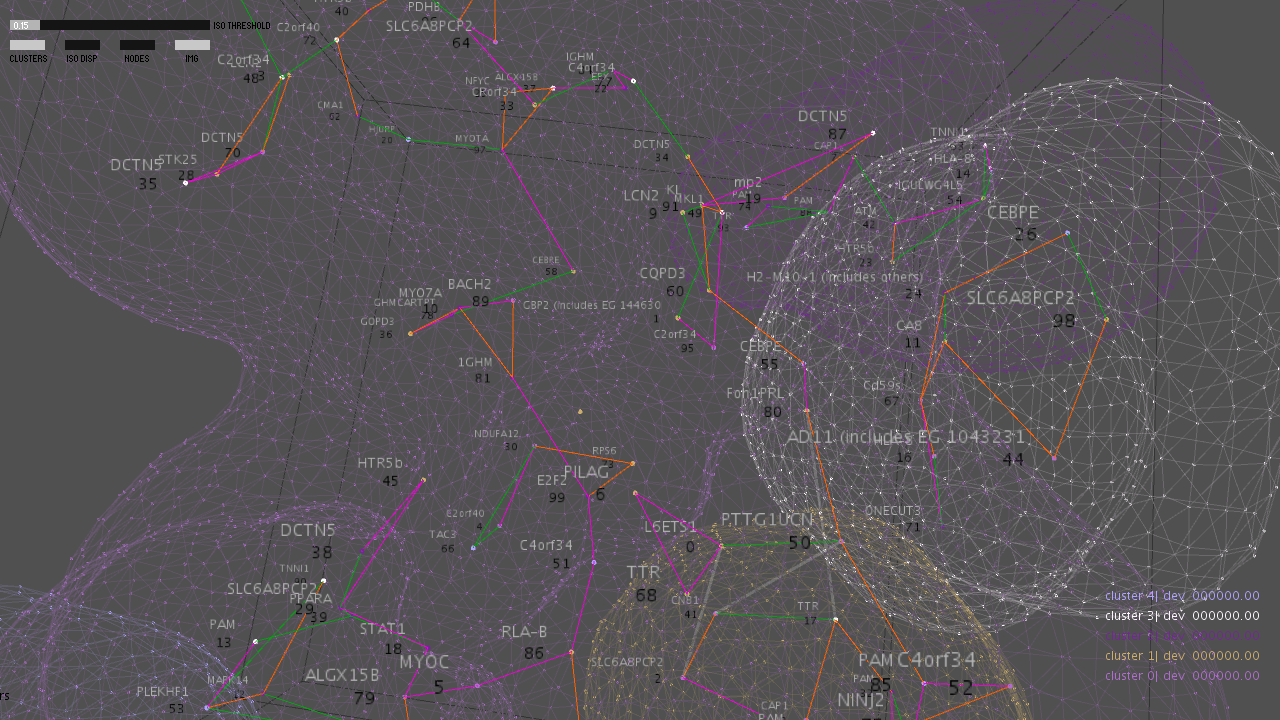

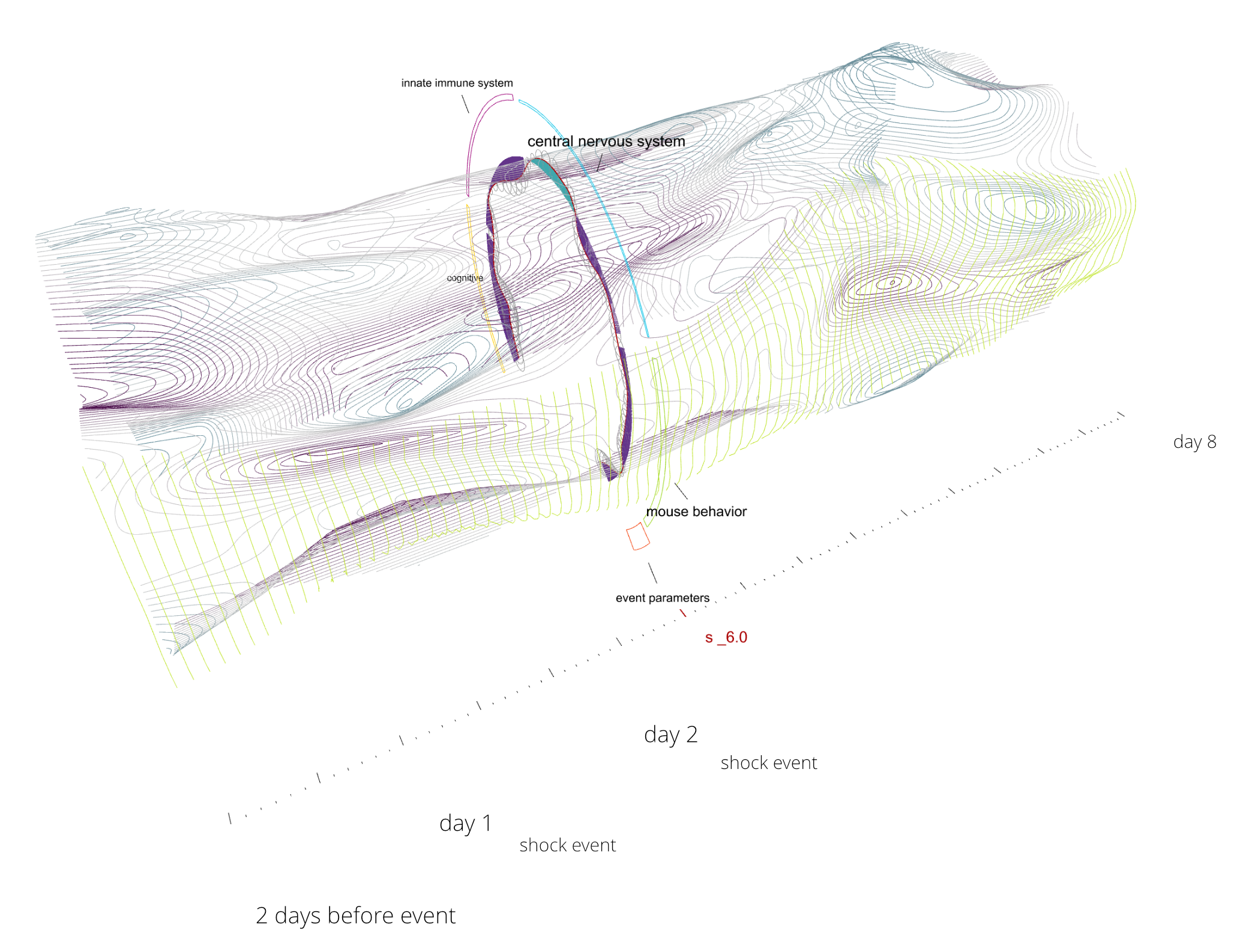
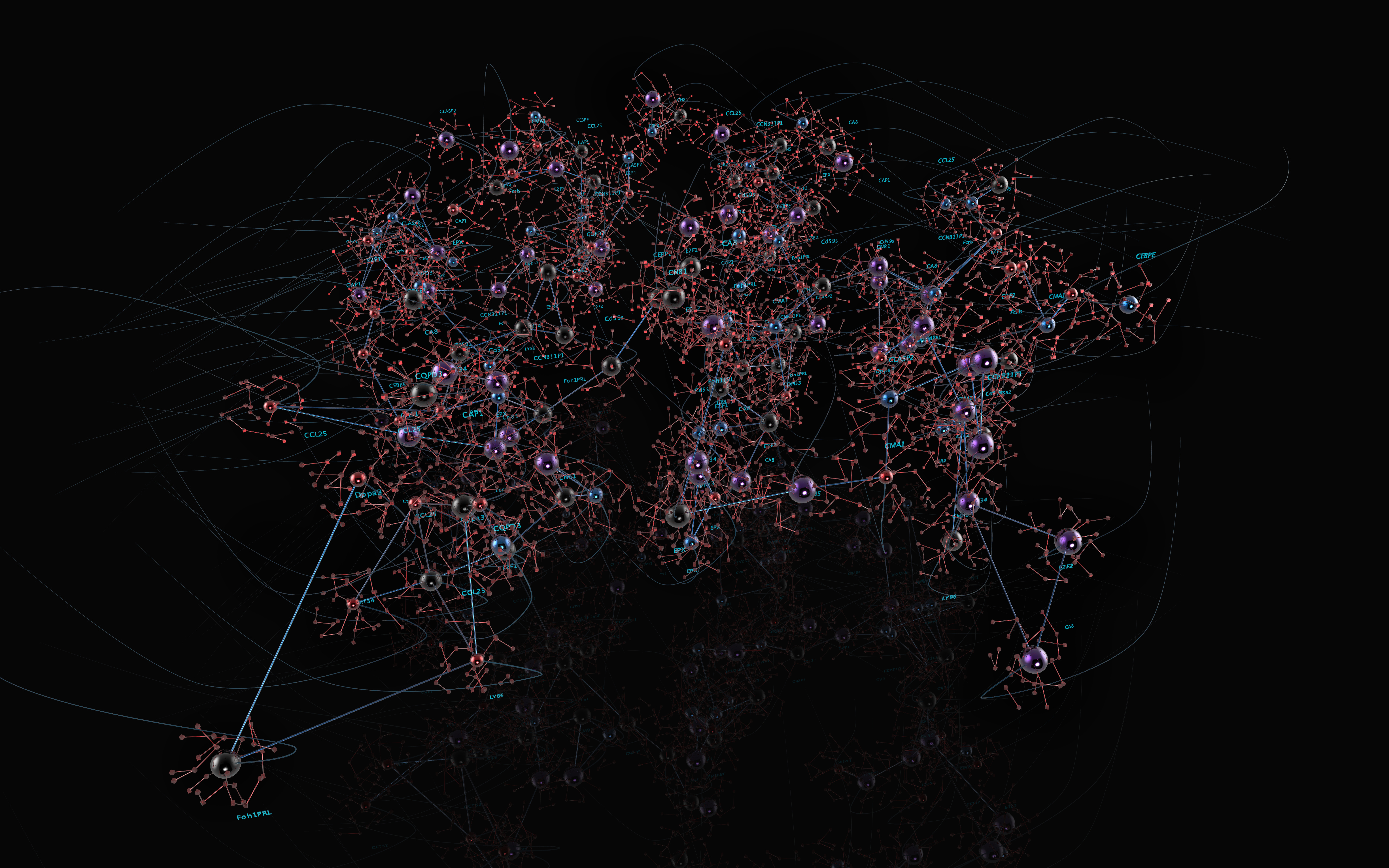
_____
Collaborators are:
– Beth Cardier (knowledge modeling), Sirius-Beta Corp / Eastern Virginia Medical School.
– Niccolo Casas (architecture and design), RISD Rhode Island School of Design; University College of London.
– Alessio Erioli (engineering) Università di Bologna.
– Ted Goranson (system design), Sirius-Beta Corp.
– Patric Lundberg (biomedical virus research), Eastern Virginia Medical School.
– Larry Sanford, (biomedical sleep and trauma research), Eastern Virginia Medical School.
– Richard Ciavarra, (biomedical virus and cancer research), Eastern Virginia Medical School.
_____
Some papers on progress toward this tool, with explanations of the figures are:
2019 AI Workshop: Context
Cardier, B., Goranson, Saikou, D., Shull, J., Casas, N., Nielsen, A., Lundberg, P., Sanford, L. D., Ciavarra, R., (upcoming) A Narrative Modeling Platform: Modeling Implicit Influence Among Contexts. AAAI Spring Symposium on Computational Context: Autonomous machines and human awareness: User interventions, intuition and mutually constructed context.
2017 Biophysics: Multi-scale modeling
Cardier, B., Goranson, H. T., Casas, N., Lundberg, P., Erioli, A., Takaki, R., Nagy, D., Ciavarra, R., Sanford, L. (2017). Modeling the peak of emergence in systems: design and katachi. Progress in Biophysics and Molecular Biology, 131(c), 213-241 pdf here.
2017 AI Workshop: Natural Intelligence
Cardier, B., Sanford, L. D., Goranson, H. T., Devlin, K., Lundberg, P. S., Ciavarra, R., Casas, N. Erioli, A. (2017). Modeling the Resituation of Memory in Neurobiology and Narrative. Proceedings from AAAI Spring Symposium on Science of Intelligence: Computational Principles of Natural and Artificial Intelligence, pdf here and related poster.
2017 AI Workshop: Context
Cardier, B. (2017). The Moving Lens: Coherence across heterogeneous contexts in narrative and biology. Proceedings from AAAI Spring Symposium on Computational Context: Why It’s Important, What It Means, and Can It Be Computed? pdf here.
2015 Biophysics: Phenomenological Types
Goranson, H. T., Cardier, B., & Devlin, K. J. (2015). Pragmatic Phenomenological Types. Progress in Biophysics and Molecular Biology, 119(3), 420-436 pdf here.
___
More information about the National Academies Keck Futures Initiative can be found on the NAKFI website and Beth’s blog.
___
References
Devlin, K.J., 2009. Modeling Real Reasoning, in: Sommaruga, G. (Ed.), Formal Theories of Information: From Shannon to Semantic Information Theory and General Concepts of Information, Lecture Notes In Computer Science 5363. Springer, pp. 234–252.